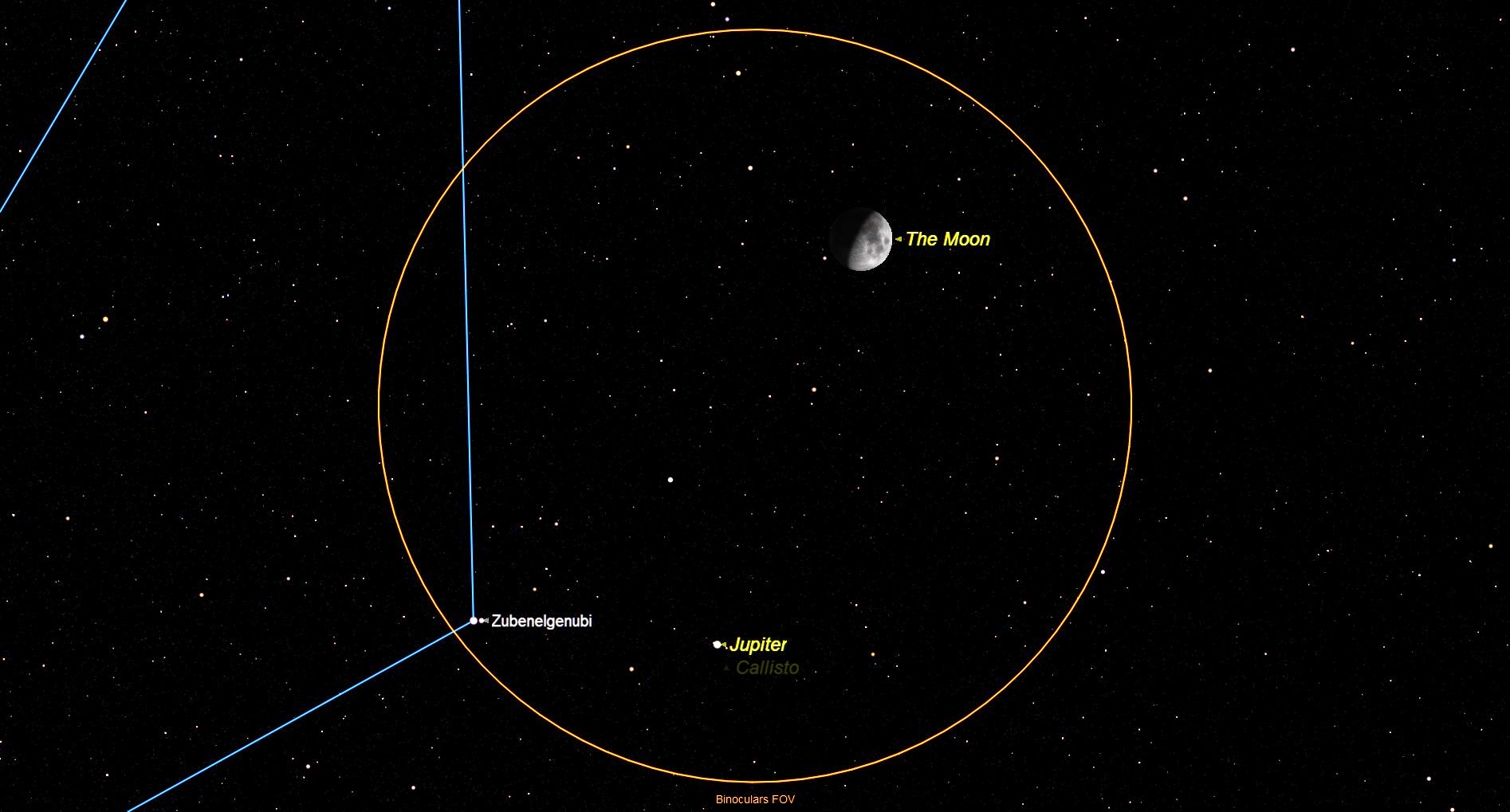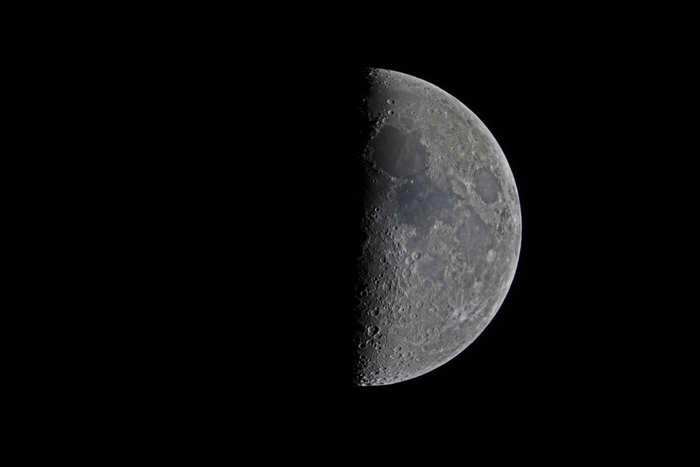Moon and Jupiter Get Together Friday to Celebrate Lunar Landing Anniversary

Friday will mark the 49th anniversary of one of humanity's greatest achievements: Apollo 11, the first lunar landing. On July 20, 1969, at 10:56 p.m. Eastern Time, as 600 million people worldwide watched on television, astronaut Neil Armstrong set foot on the moon's surface and said, "That's one small step for man . . . one giant leap for mankind." If you were alive back then, no doubt you watched or at least listened to radio coverage of that amazing event.
And if you had stepped outside that evening and looked skyward, you would have seen the moon appearing as a wide crescent, 35 percent illuminated by the sun. Almost a dozen degrees to its right, you would have seen a very bright, silvery-white object, mimicking a star but not twinkling — instead, shining with a steady glow. That would have been the planet Jupiter.
Now, fast-forward 49 years to the present. On Friday evening (July 20), assuming your skies are reasonably clear, you can see the same two celestial objects that were so prominent in the night sky nearly half a century ago: the moon and the planet Jupiter. [Exploring the Apollo Moon Missions Using Mobile Apps]
About 1 hour after the sun sets, the eye-catching celestial duo will be visible in the southwest sky, roughly halfway up from the horizon to the point directly overhead (called the zenith). The moon, which will be just one day past first quarter phase — 63-percent illuminated by the sun — will be situated just above Jupiter, at a distance of roughly 3.5 degrees.
As we have noted before, your clenched fist held at arm's length measures roughly 10 degrees, so the distance between the moon and Jupiter will measure about one-third of a fist.
When the moon is at or just past first-quarter phase, like it will be on Friday, we get the best views of the lunar landscape right along the sunrise-sunset line or terminator. When the moon is between 50- and 75-percent lit, those features lying close to the terminator stand out in sharp, clear relief. Using a telescope with small optical power (magnifications of 20 to 40x), or even with good binoculars, we can then see a wealth of detail on the lunar surface.

In a telescope, Jupiter is also a prime attraction, best observed during early evening, when it's still high and its image is reasonably calm. And its four bright moons are always performing. They seem like small stars, though two of them are really larger than our own moon. You can watch them change their positions relative to each other from hour to hour and from night to night.
Get the Space.com Newsletter
Breaking space news, the latest updates on rocket launches, skywatching events and more!
In fact, if you look at Jupiter with a small telescope or even steadily held binoculars on Friday evening, you'll see at least three and possibly all four of those big satellites. The number depends on where you are located and when you look. In the eastern U.S., as soon as it gets dark, you'll see two moons flanking Jupiter on either side: Io and Ganymede on one side and Europa and Callisto on the other.
At 11:06 p.m. EDT, Ganymede will fade from view as it will become eclipsed by Jupiter's shadow. This moon will gradually reappear, beginning at 12:52 a.m. EDT (9:52 p.m. Pacific Time), once again placing all four satellites in view. But only an hour later, Europa will vanish for a few hours as it passes behind Jupiter's disk.
So, on the anniversary night of the first moon landing, while you enjoy the sight of Jupiter near the moon, keep in mind that up to four more moons are visible with only slight optical aid.
And if it's cloudy that night? Well, I Apollo-gize.
Joe Rao serves as an instructor and guest lecturer at New York's Hayden Planetarium. He writes about astronomy for Natural History magazine, the Farmers' Almanac and other publications, and he is also an on-camera meteorologist for Verizon FiOS1 News in New York's lower Hudson Valley. Follow us @Spacedotcom, Facebook and Google+. Original article on Space.com.
Join our Space Forums to keep talking space on the latest missions, night sky and more! And if you have a news tip, correction or comment, let us know at: community@space.com.

Joe Rao is Space.com's skywatching columnist, as well as a veteran meteorologist and eclipse chaser who also serves as an instructor and guest lecturer at New York's Hayden Planetarium. He writes about astronomy for Natural History magazine, Sky & Telescope and other publications. Joe is an 8-time Emmy-nominated meteorologist who served the Putnam Valley region of New York for over 21 years. You can find him on Twitter and YouTube tracking lunar and solar eclipses, meteor showers and more. To find out Joe's latest project, visit him on Twitter.










